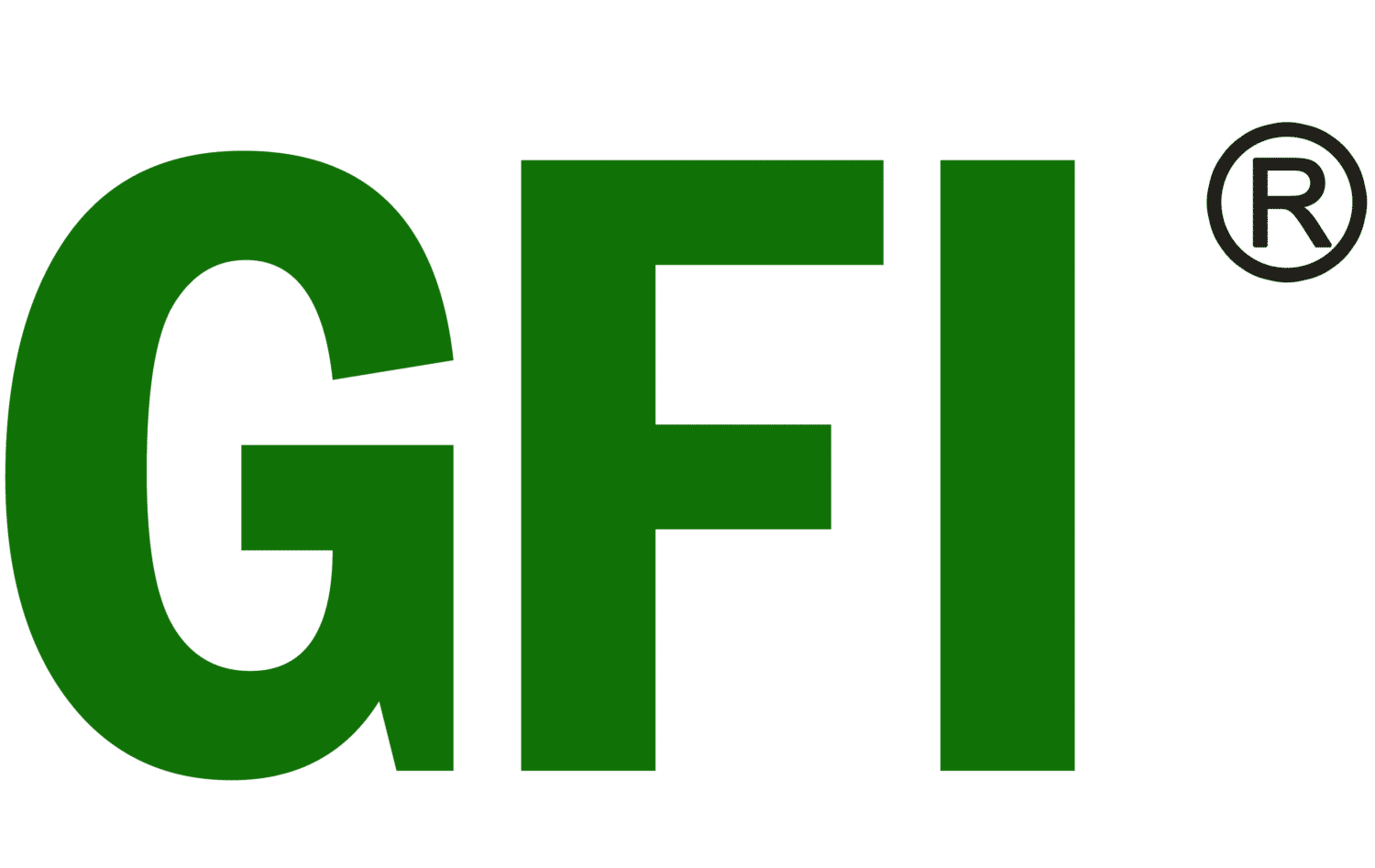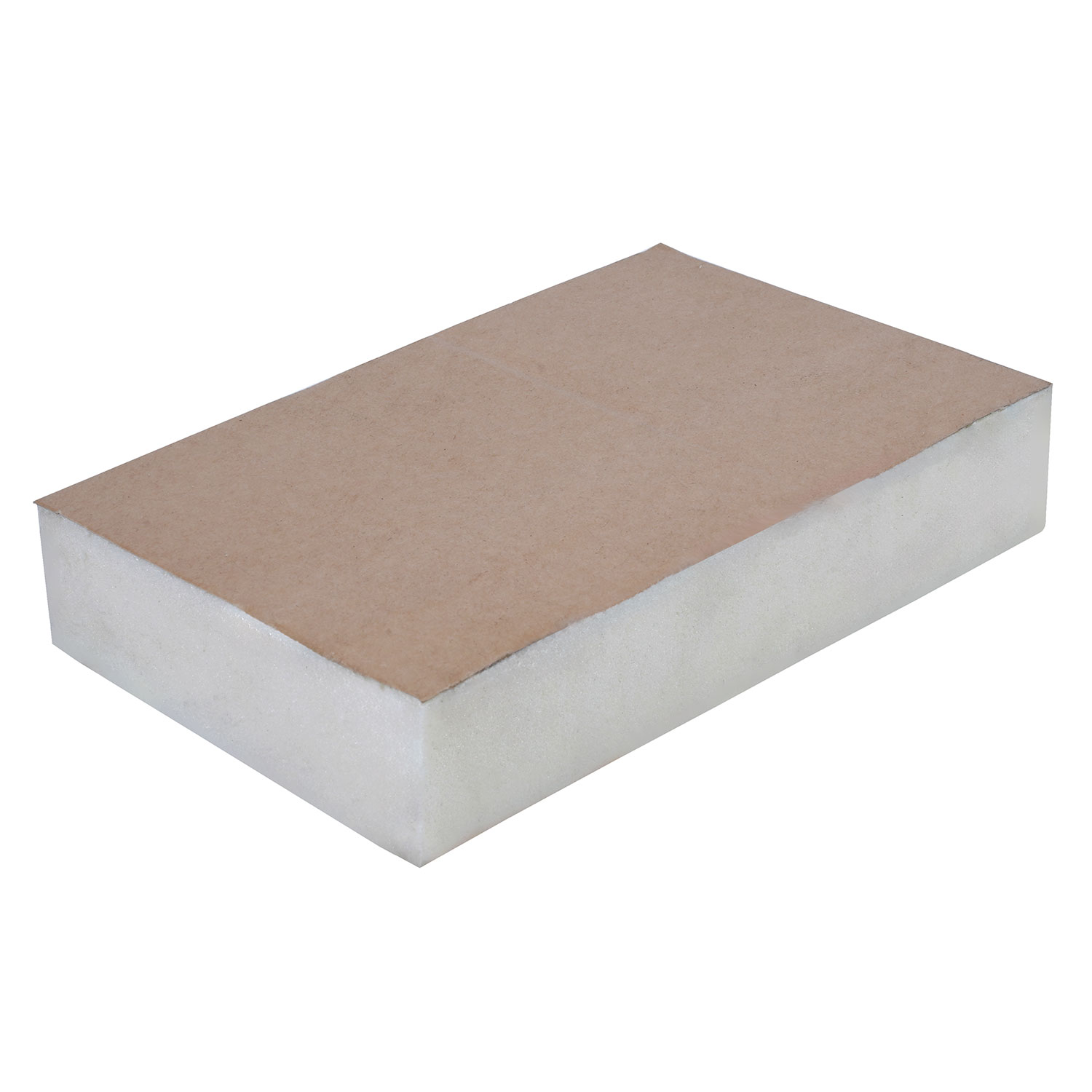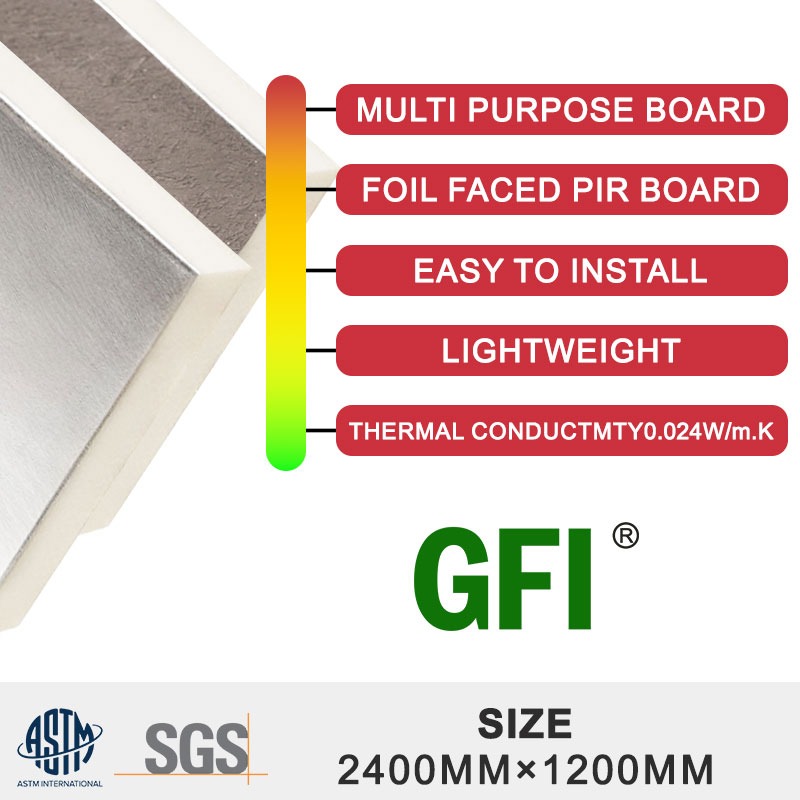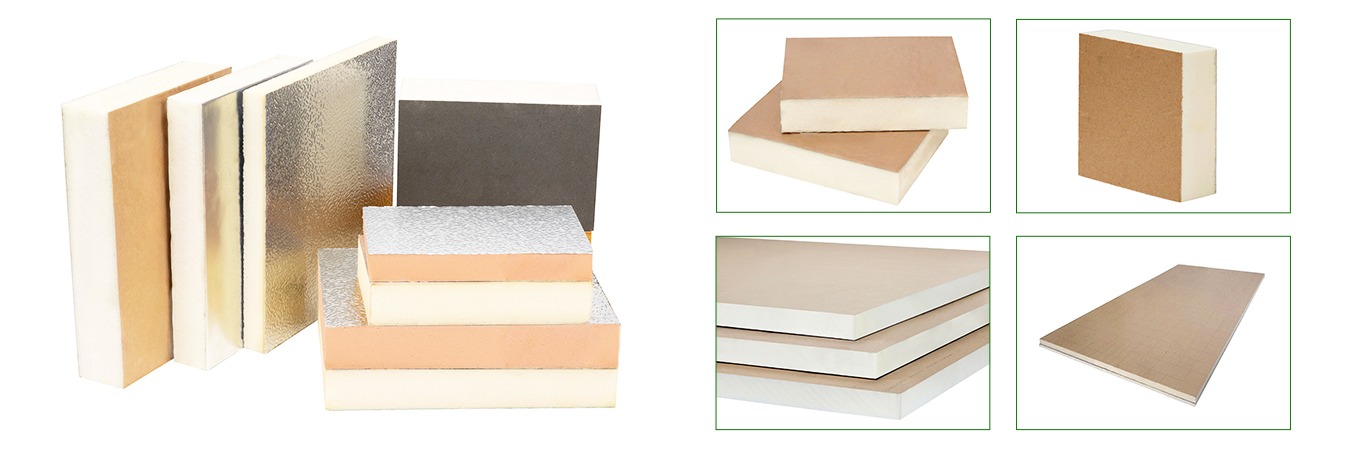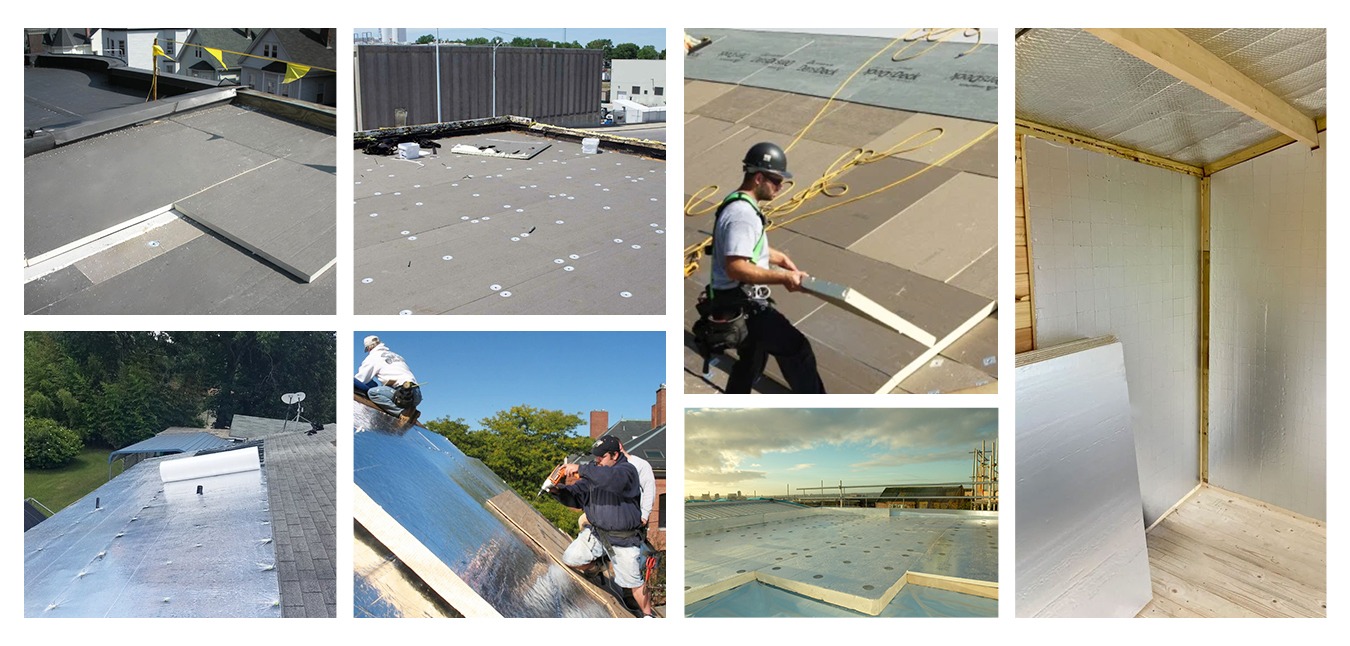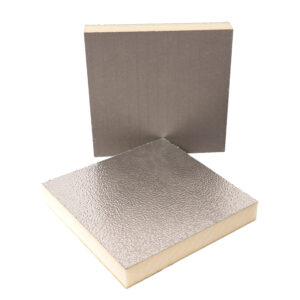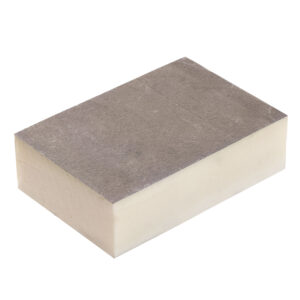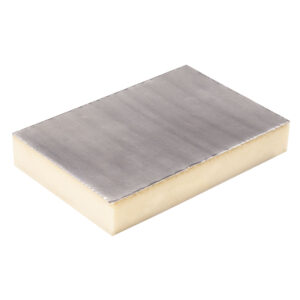PIR Thermal Insulation Board with Kraft Paper
Thickness : 10-80mm
Facing material : 200micron kraft paper
Density : 30-50 kg/m3
Size : 1.2 m / 0.6m width, length can be customized
Email Address:sales@gfiduct.com
PIR Thermal Insulation Board with Kraft Paper
PIR Thermal Insulation Board consists of PIR Foam core, faced on both sides with 200micron kraft paper. The standard width of PIR Foam Insulation Board is 1200mm or 600mm. The length can be customized. The PIR Rigid Insulation Board with a kraft paper surface are a type of advanced insulation material that combines the superior thermal properties of polyisocyanurate foam with the durability and versatility of kraft paper. These PIR Insulation Boards offer a robust, versatile, and highly efficient solution for a wide range of insulation needs.
Technical Data Sheet
| Property | Standard | Specification |
| Standard Width | 600/1200mm | |
| Thickness | 10-80mm | |
| Foam Density | ASTM D1622/D1622M-14 | 30-50kg/m³ |
| CFCs and HCFCs | Headspace GC/MS | Free |
| Thermal Conductivity | ASTM C518-17 | <=0.024W/m.K |
| Fire Rating | BS 476 Part 6&7 | Class 0 |
| Compressive Strength | ASTM D1621-16 | >=0.15Mpa |
| Tensile Bond Strength | DB34/T 3826-2021 | >=0.15Mpa |
| Water Absorption by Volume | ASTM C209-15 | <3% |
| Dimensional Stability |
70ºC 48h<=1.5% -30ºC 48h<=1.0% |
|
| Service Temperature | DB34/T 3826-2021 | -30ºC - 120ºC |
Why Choose GFI PIR Thermal Insulation Board?
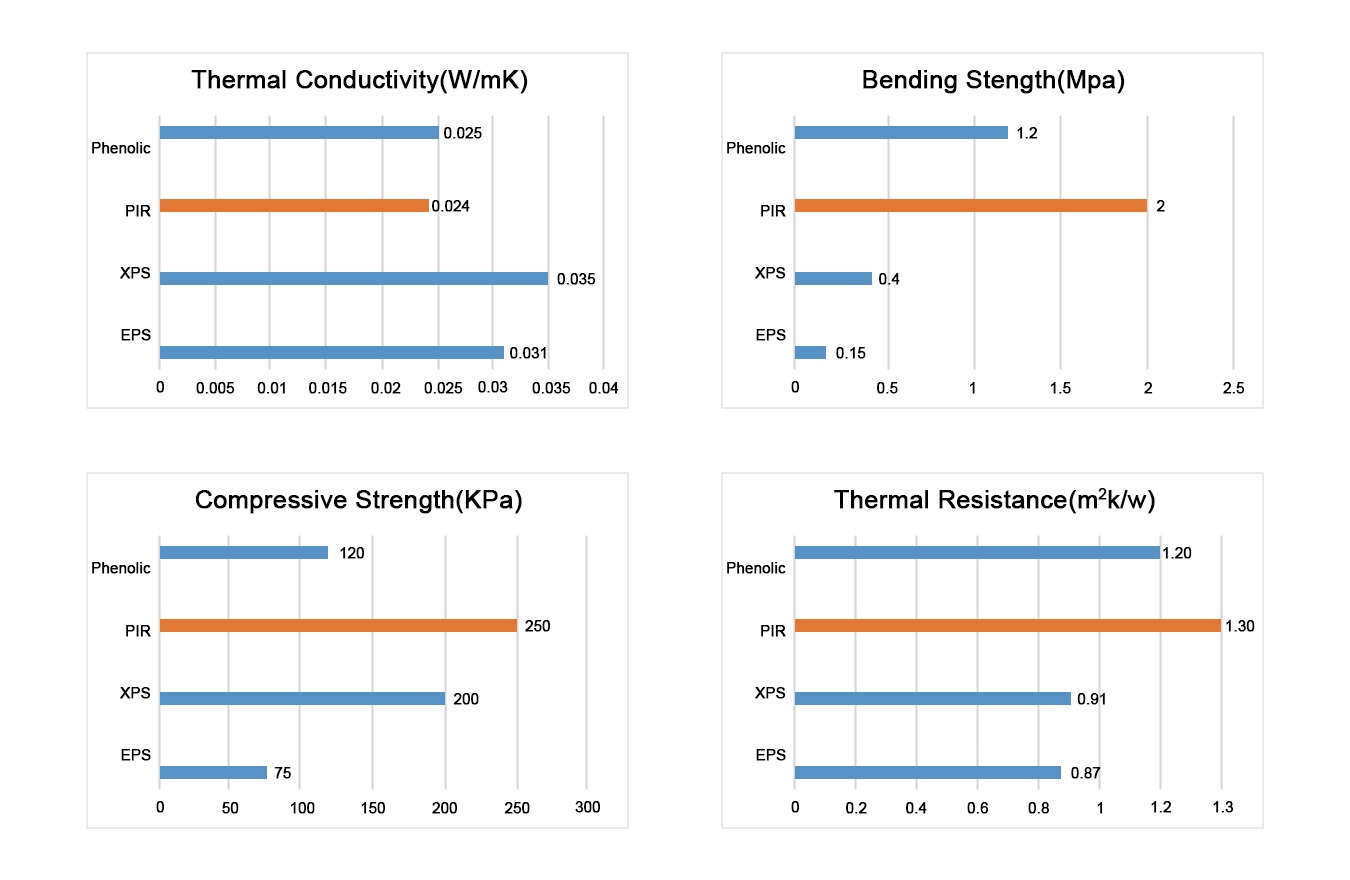
Application of PIR Foam Board Insulation
1.Wall Insulation Systems
- External Thermal Insulation Composite Systems (ETICS) : PIR Polyisocyanurate Insulation Boards serve as the primary insulation layer installed on the exterior walls of buildings, providing thermal insulation and reducing heat transfer through the walls.
- Internal Wall Insulation Systems : Used for insulating the internal walls of buildings, particularly suitable for retrofitting old buildings for energy efficiency without affecting the exterior appearance.
2.Roof Insulation
- Flat Roof Insulation : PIR Insulation Boards can be directly laid on flat roofs, creating a continuous insulation layer to prevent heat loss through the roof.
- Pitched Roof Insulation : Suitable for various forms of pitched roofs, easy to install, and enhances overall insulation performance.
3.Floor Insulation
- Underfloor Heating Systems : In underfloor heating systems, PIR Rigid Insulation Board effectively reduce downward heat loss, improving the energy efficiency of the heating system.
- General Floor Insulation : Used in regular floor structures to enhance insulation performance and improve indoor comfort.
4.Curtain Wall Insulation
- Glass Curtain Wall Insulation : PIR Foam Insulation Boards can be used as insulation material in glass curtain wall systems, improving the thermal insulation performance of the curtain wall and reducing energy loss.
Buring Comparison Test
The following pictures show the state of the RLB-l Polyisocyanurate insulation fireproof composite board under the direct combustion of the 1300℃ flame torch for each period of time. During the entire experiment, the RLB-I PIR Insulation Board did not burn through and did not drip water. Prevent flame spread and heat conduction, no burning phenomenon.

